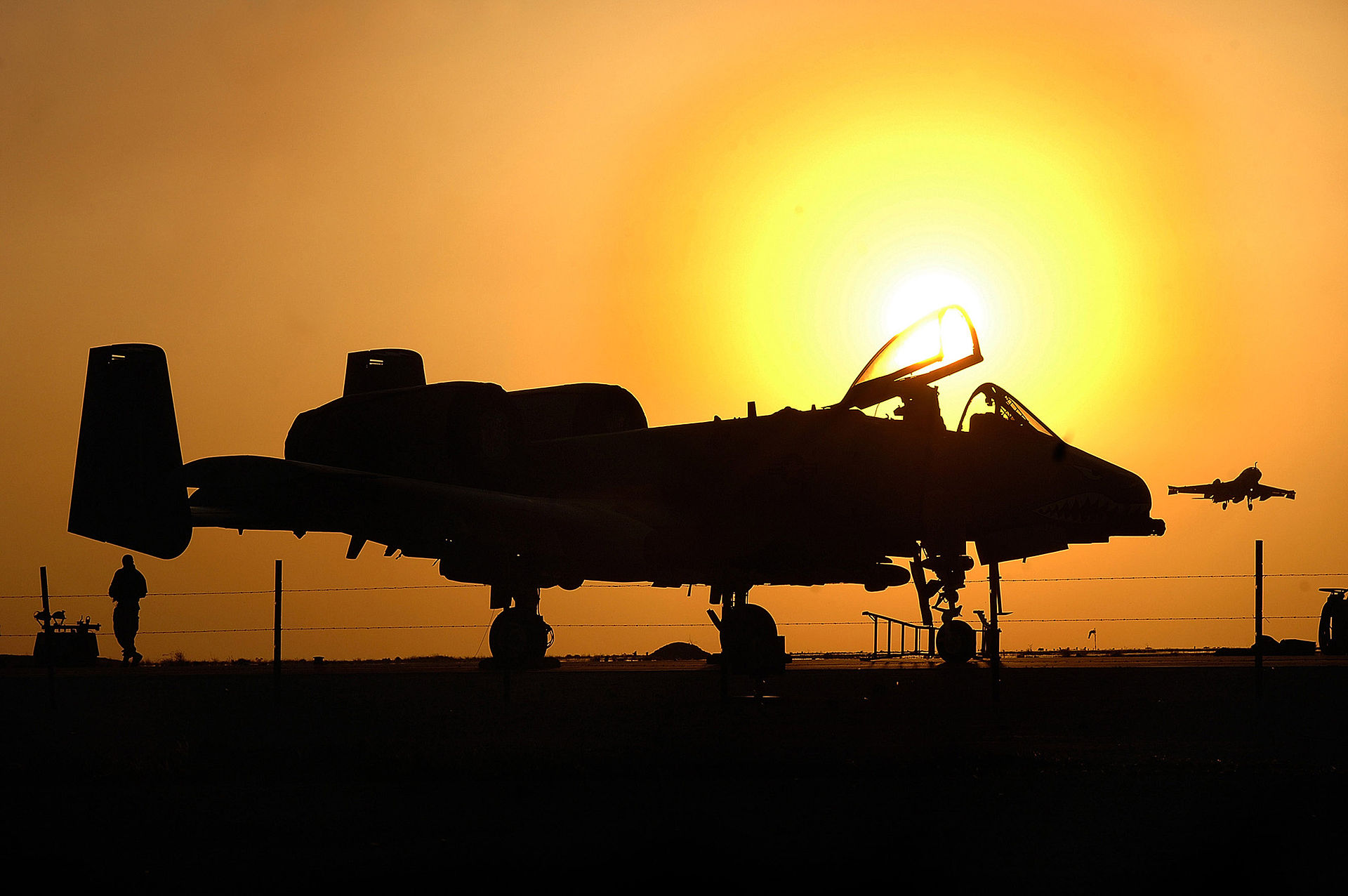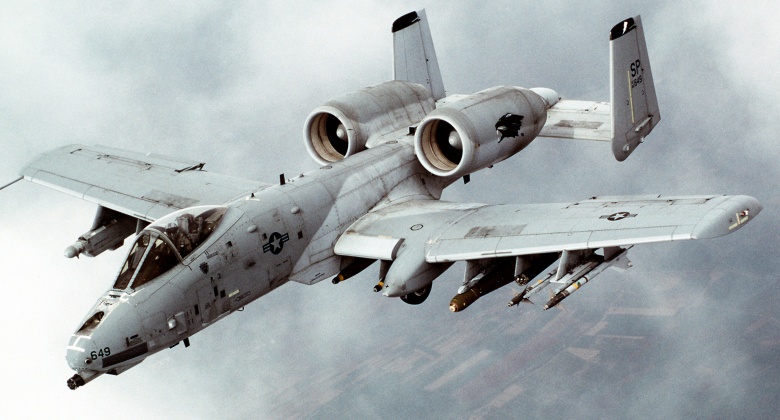A-10 Warthog: A Warplane Like No Other Built Around a 'Cannon'
After years of purgatory, the U.S. Air Force finally seems set to begin retiring the famed A-10 Warthog over the next five or six years.
After years of purgatory, the U.S. Air Force finally seems set to begin retiring the famed A-10 Warthog over the next five or six years.
The decision is a culmination of a conversation that has been raging through successive presidential administrations.
The A-10 has been a persistent source of controversy, with the Air Force and Congress disagreeing over the future of the jet.
But with the United States pivoting its attention towards adversaries with modern air defense systems, fatal doubt has been cast on the viability of the non-stealth A-10.' Still, the A-10 will be remembered as the single best close air support airframe in aviation history.
Do One Thing, Do It Well
During the Cold War, when the United States was immersed in great power competition with a peer competitor, Congress was not shy about funding super-specific airframes.
Whereas today, in a more cost-conscious budgetary environment, airframes like the F-35 and F-18 are designed to complete a variety of functions – Cold War designers had leeway to design airframes that did one thing and did that one thing especially well.
The result was a spectrum of inefficient, yet dazzling designs.
The SR-71 was built singularly to serve in a reconnaissance role; the F-15 was built singularly to serve in an air superiority role; the A-6 was built singularly to serve in a bad-weather/nighttime bombing role; and the A-10 was built singularly to provide the best close air support in the history of warfare.
Built by Fairchild Republic, the A-10 is a heavily modified version of the Douglas A-1 Skyraider, which happened to be the last propeller-driven fighter/bomber in the U.S. military’s inventory. While the A-10 shares some basic elements with the A-1, the airframes are quite different.
Notably, the A-10 has two jet engines, placed above the wings, which themselves are set further back along the fuselage than the A-1. The A-10 also relies upon two vertical stabilizers, set at the far ends of the horizontal stabilizers, whereas the A-1 featured a single vertical stabilizer set dead center between the horizontal stabilizers.
Most notably, the A-10 was built around a Gatling gun. The A-1 was not. Actually, no other airframe has been built around a Gatling gun – in that respect the A-10 is distinct.
Built Around One Massive Gun
Justifiably, the A-10 is best known for its primary weapon: 30x173mm GAU-8/A Avenger autocannon – basically a Gatling gun that extends down the fuselage before emerging from the A-10’s jet. The GAU-8 is a hydraulically driven seven-barrel rotary cannon with a difficult-to-comprehend rate of fire: 3,900 rounds per minute, or 70 rounds per second.
Oh, and each round, crafted from depleted uranium, is roughly the size of a Pepsi can. Essentially, when the GAU-8 shoots something, that something is destroyed.
The A-10, and its GAU-8 autocannon, were designed with Soviet tanks in mind – specifically, Russian tanks moving across the open plains of Eastern Europe (a la the Donbas region of Eastern Ukraine). But when the Cold War ended and the Soviet threat subsided, the A-10 was left without its intended purpose.
Enter Iraq and Afghanistan. While the wars didn’t make much sense from a strategic standpoint, the wars demonstrated the utility of the A-10 Warthog, which preyed upon enemy ground vehicles and came to be highly respected amongst American ground troops for its ability to loiter and provide close air support when needed.
And while the A-10 was built to dole out punishment, the A-10 was also built to withstand punishment. Remarkably, the A-10 is capable of surviving direct hits from armor-piercing and high-explosive projectiles.
The A-10’s hydraulic flight systems are double-redundant, with a mechanical contingency in the event that hydraulic systems are incapacitated. Similarly, the A-10 can stay airborne even after having suffered extreme structural damage, including the loss of a stabilizer, half a tail, and half a wing sheared off.
Meanwhile, the pilot is encased within 1,200 pounds of titanium armor, which surrounds the cockpit. The titanium encasement is referred to as the “bathtub,” and features titanium plates that vary in thickness from 0.5 to 1.5 inches. The bathtub armor has been tested to prevent penetration of 23mm shells, meaning enemy fire is unlikely to reach the pilot’s person.

A-10 Headed Towards Retirement
In 2023, after years of debate, Congress granted the Air Force permission to begin retiring A-10s. Air Force Chief of Staff Charles Brown said that he expects all A-10s to be retired before the end of the decade. While the Air Force is unlikely to design or introduce an airframe that performs the close air support function more brilliantly than the A-10, the simple fact is that the A-10 is poorly suited for modern conflict against modern adversaries, namely, China.

The A-10 simply lacks the stealth or speed to survive in contested air space.
Harrison Kass is a defense writer and national security expert having penned over 1,000 articles on such issues. An attorney, pilot, guitarist, and minor pro hockey player, Harrison joined the US Air Force as a Pilot Trainee but was medically discharged. Harrison holds a BA from Lake Forest College, a JD from the University of Oregon, and an MA from New York University. Harrison listens to Dokken.
All images are Creative Commons.


